Have you ever been served spicy chile oil with addictively crunchy bits at a Mexican restaurant or bar? It is called salsa macha and it is a breeze to make at home. Use it on everything from tacos to rice to pizza!
Jump to: Recipe | Serving Suggestions | Shelf Life
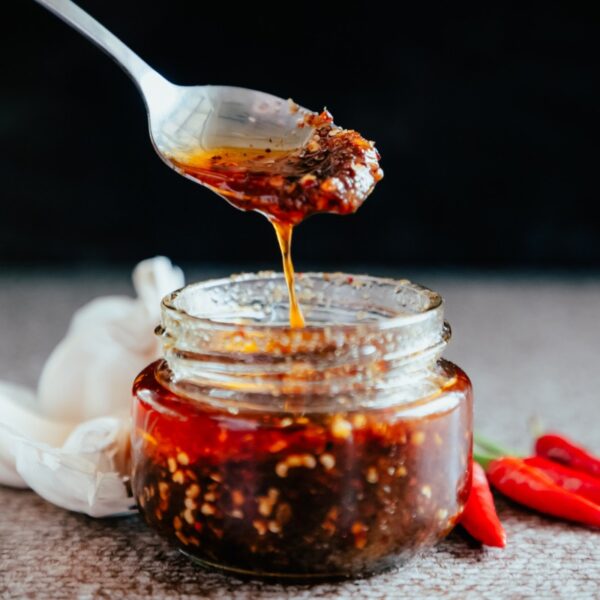
This post may contain affiliate links. As an Amazon Associate, I also earn from qualifying purchases. You can read our disclosure information here–
What is Salsa Macha (Mexican Chile Oil)?
Ever had the feeling your tacos, chorizo scrambled eggs or quesadillas were missing a bit of… something? Crisp, depth, smokiness, heat?
That’s probably because you didn’t top them with salsa macha!
Likely originating in the province of Veracruz, Mexico, salsa macha is the Mexican answer to Chinese chili crisp.
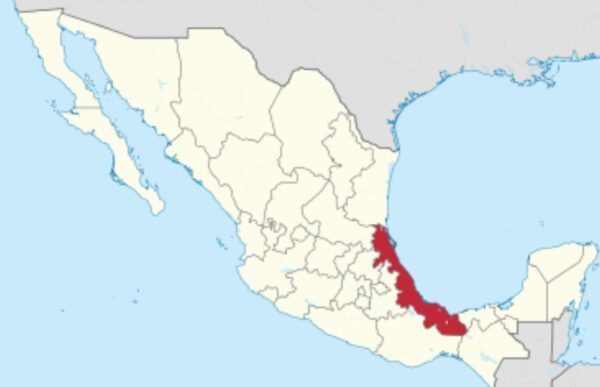
The word “macha” stems from the verb “machacar” in Spanish, which means crushing or pounding – a reference to the fact that this salsa was originally prepared in a molcajete, a traditional basalt stone mortar, and pestle.
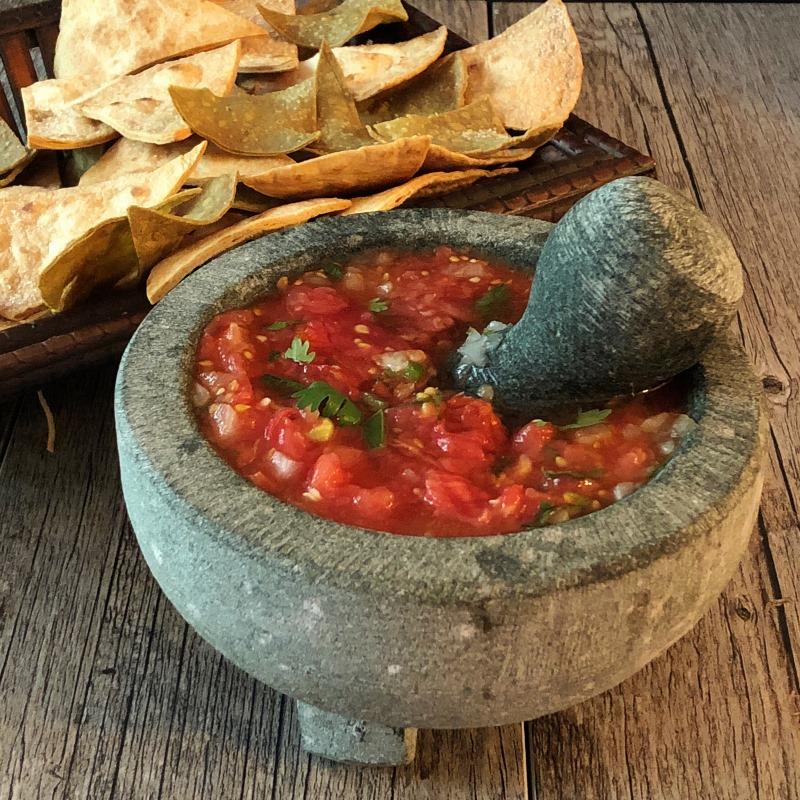
Tip: Don’t have a molcajete? Nowadays, some folks use a blender to prepare this Mexican chile oil.
Dried chile peppers and garlic are fried in oil to crisp them up and then combined with nuts and some vinegar to make a spicy oil with delightfully crispy bits.
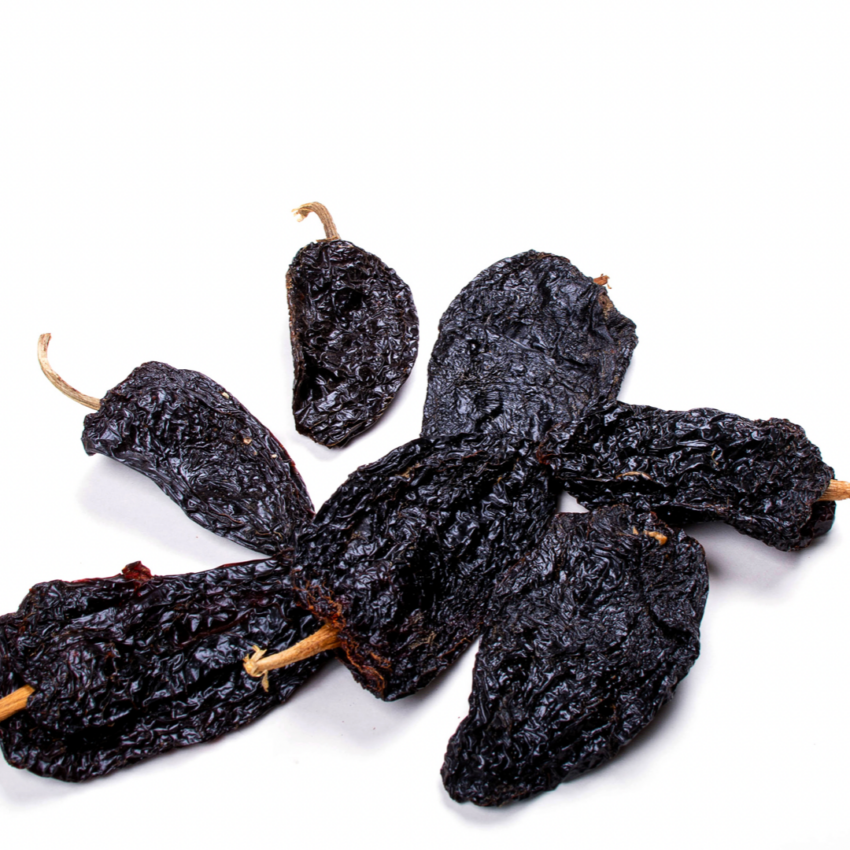
Perfect to top pretty much everything you can think of. I even sneak a bit straight from the jar sometimes!
Salsa macha has definitely been “discovered” here in the U.S., which is good news for us, as it’s becoming more easy to find.
Your local Mexican grocery store might carry a few versions, although my personal favorites are the salsa macha varieties from the Masienda store:
This being said, salsa macha is also very easy to make at home (see recipe below).
Because it’s oil-based, you can prepare big batches and store them for 1-2 months to use whenever you want to add a bit of “zing” to both Mexican and international dishes.
Mexican Chile Oil vs Chili Crisp
As I mentioned, Mexican salsa macha is similar to chili crisp, a condiment popular throughout much of China.
You may have tried the popular Lao Gan Ma chili crisp, which became a trending topic during the pandemic for use on anything from avocado toast to ice cream (yes, really, ice cream).
The base for salsa macha and chili crisp is the same: dried chile peppers and oil. Both also contain fried garlic and may have sesame seeds.
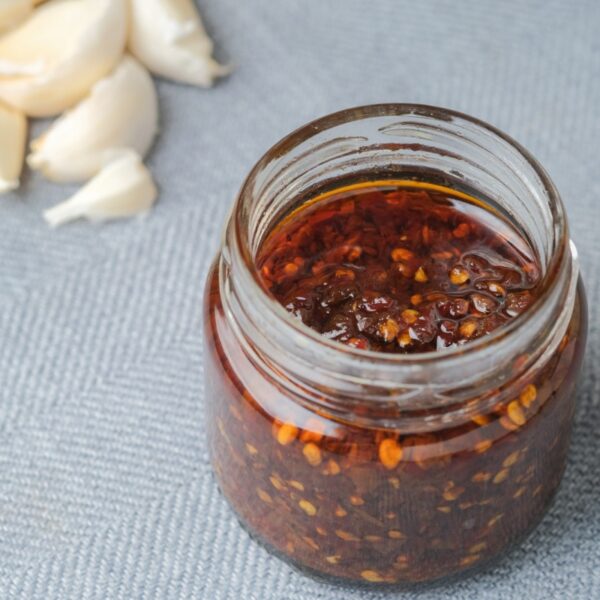
However, there are several differences:
- Chinese chili crisp contains onions, soy sauce, ginger, and Szechuan peppercorns
- Chinese chili crisp may contain fermented soybeans and spices like star anise
- Mexican salsa macha contains peanuts and vinegar
- Mexican salsa macha usually doesn’t contain sugar, chili crisp has a little
Tip: If you like a strong smoky flavor, you should go for salsa macha. If umami (savoriness) and flavor complexity are your priorities, you can try chili crisp instead.
Key Ingredients & Substitutions
As often happens with classic recipes, loads of different versions of salsa macha have popped up over the years.
Depending on where you are in Mexico, you’ll be served macha with or without peanuts, with or without sesame seeds, and with different types of chile peppers.
In this recipe, we’ll imitate the version popular in the province of Veracruz. It has both peanuts and sesame seeds, which I think add to the flavor! Still, if you want something very simple, you can skip them.
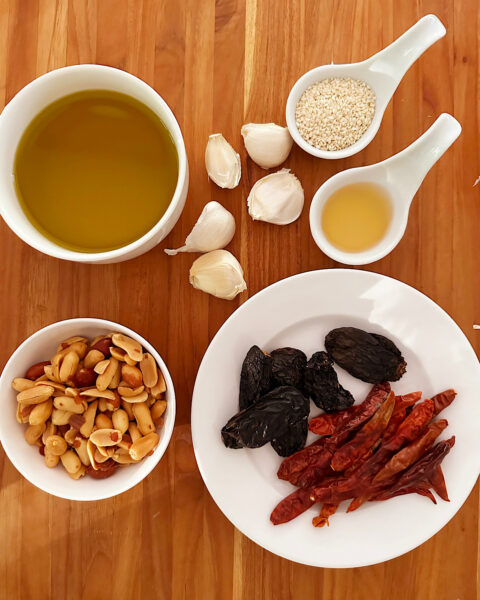
- Chile peppers: see the section below for details.
- Fresh garlic
- Toasted peanuts, or use almonds or pecans
- Toasted sesame seeds, or use sunflower/pumpkin seeds
- Vinegar, such as apple cider vinegar or just regular white
- Vegetable oil, like olive oil or peanut oil, depending on which flavor you prefer
- Salt
I recommend making your first batch of Mexican chili oil with these basic ingredients, just to get a feel for the flavor.
After that, the world is your oyster… try adding dried fruit, cacao nibs, or even dried hibiscus flower (sold as “flor de Jamaica”).
Best Peppers to Use
The best peppers to use for salsa macha are the peppers you have on hand. As mentioned, even inside the country of Mexico, different versions of this salsa are to be found.
In some regions, chile de árbol (bird’s beak pepper) is used, while in others, folks prefer chipotles (dried, smoked jalapeños). Serranos are also popular.
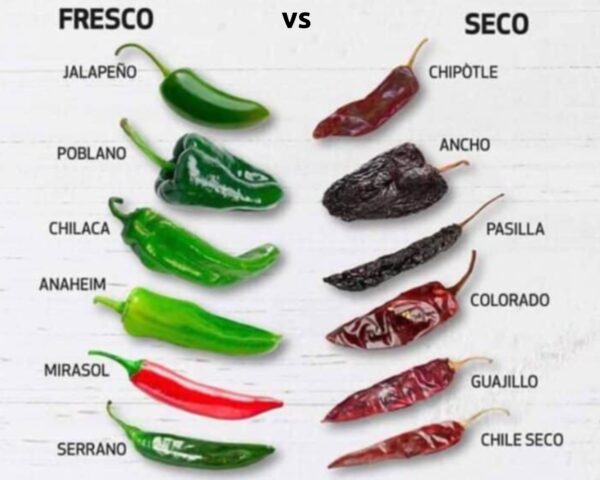
Here are some options. Mix them up if you want!
- Chile de árbol: earthy and potent
- Chipotle (such as chile Morita): smoky, less spicy
- Chile serrano: sweet, earthy, quite potent
- Chile ancho: sweet, mild
- Chile de guajillo: sweet, tangy, quite mild
Tip: If you don’t handle spicy food very well yet, your best bet is probably a mix of anchos and guajillos. More experienced spice lovers can go straight for the chiles de árbol. At a maximum Scoville rating of 30,000, they’re still way less spicy than something like a habanero.
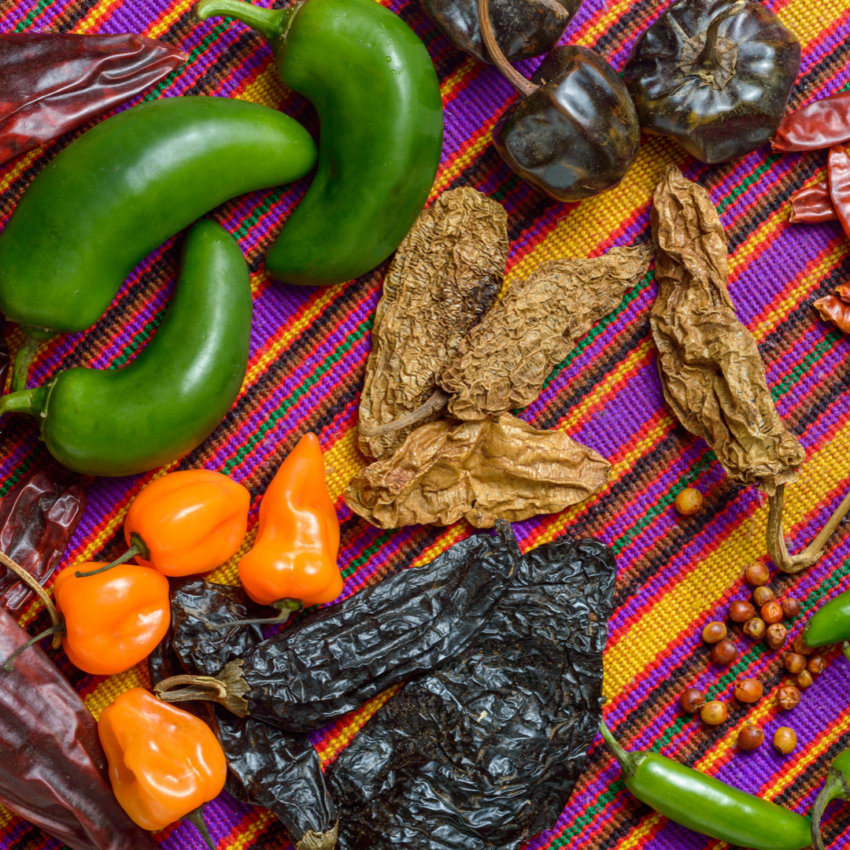
Illustrated Step by Step
Here are the steps lined out with photos. For the details of the recipe itself, see the recipe card below.
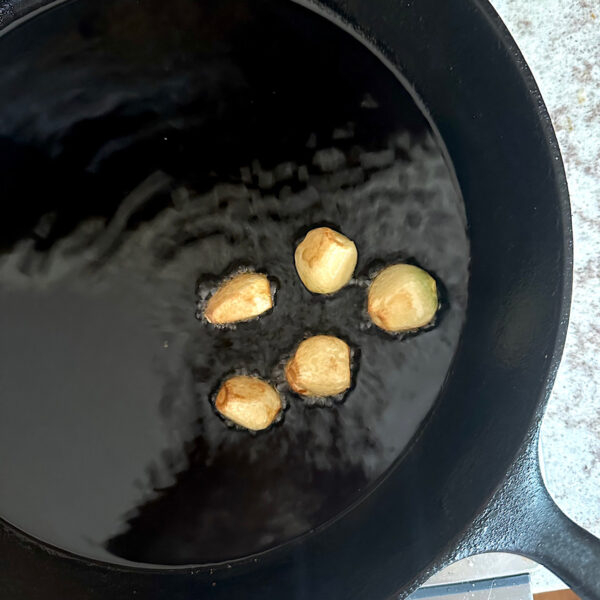
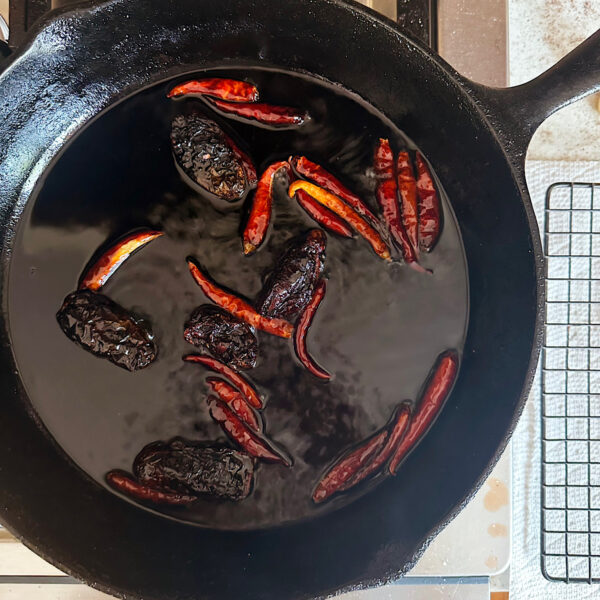
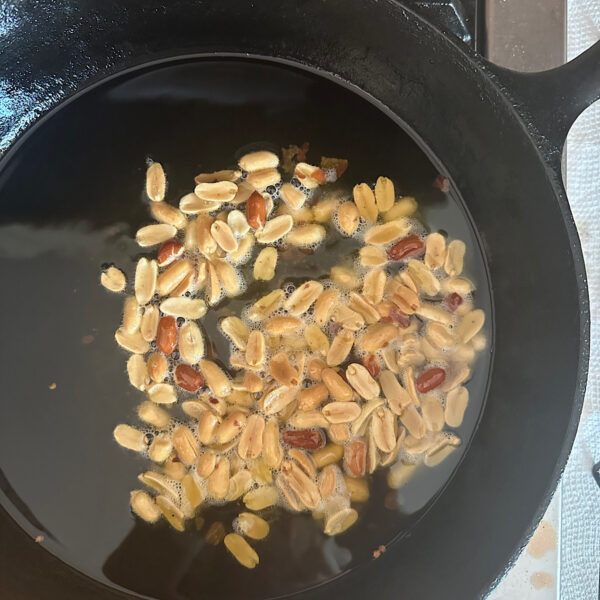
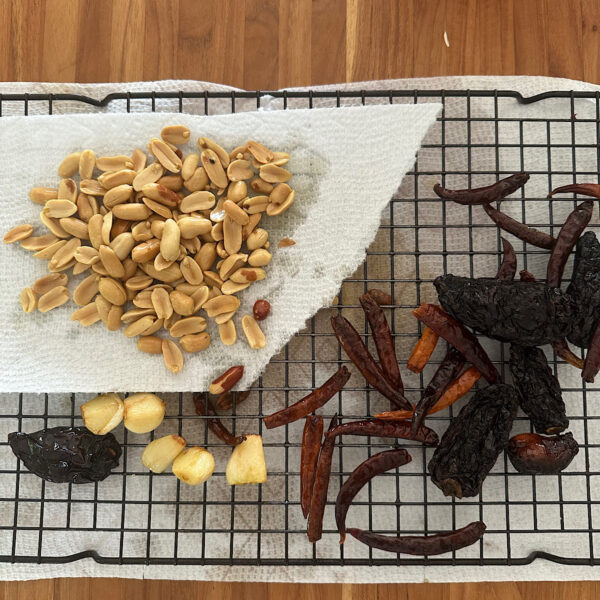
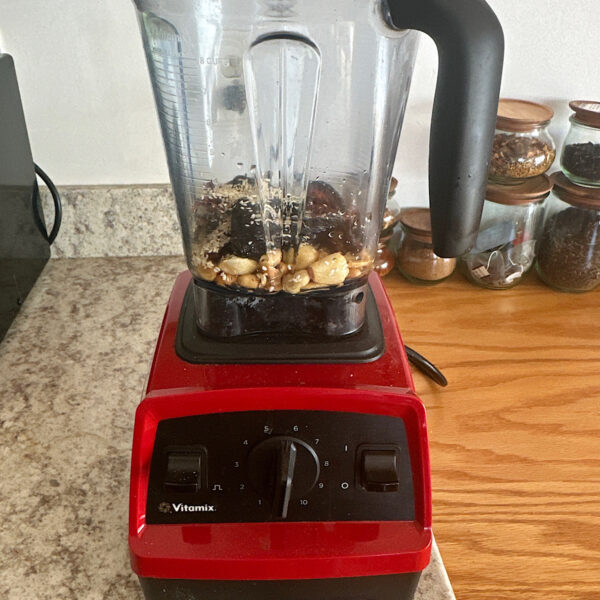
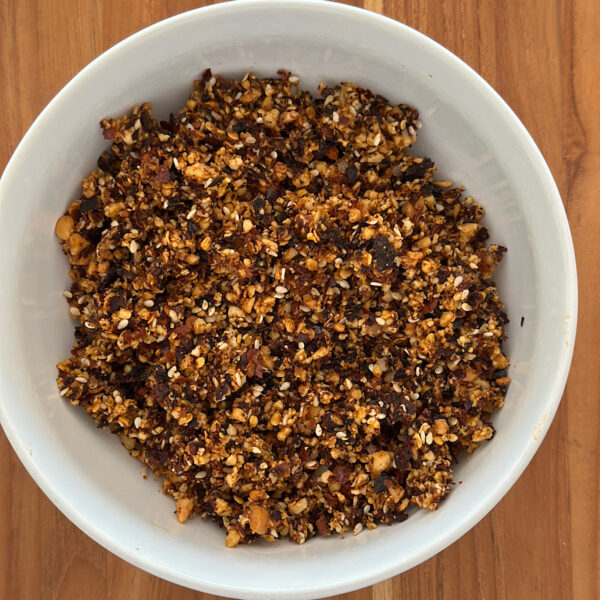
Serving Suggestions For Mexican Chile Oil
One of the main reasons salsa macha is quickly gaining popularity here is because it’s just so versatile.
Of course, it is fantastic with Mexican dishes. And it also is delicious with a range of foods.
Here are some ideas for Mexican foods you can slather in salsa macha. You’ll notice there are even some soups and stews in there: the salsa gives depth and crisp!
- Tacos, like birria (tacos served with consommé)
- Sopa de fideos (noodle soup)
- Chorizo & eggs (spicy breakfast classic)
- Tamales (stuffed corn dough steamed in corn husks)
- Quesadillas (cheese-stuffed tortillas)
- Pozole (traditional stew)
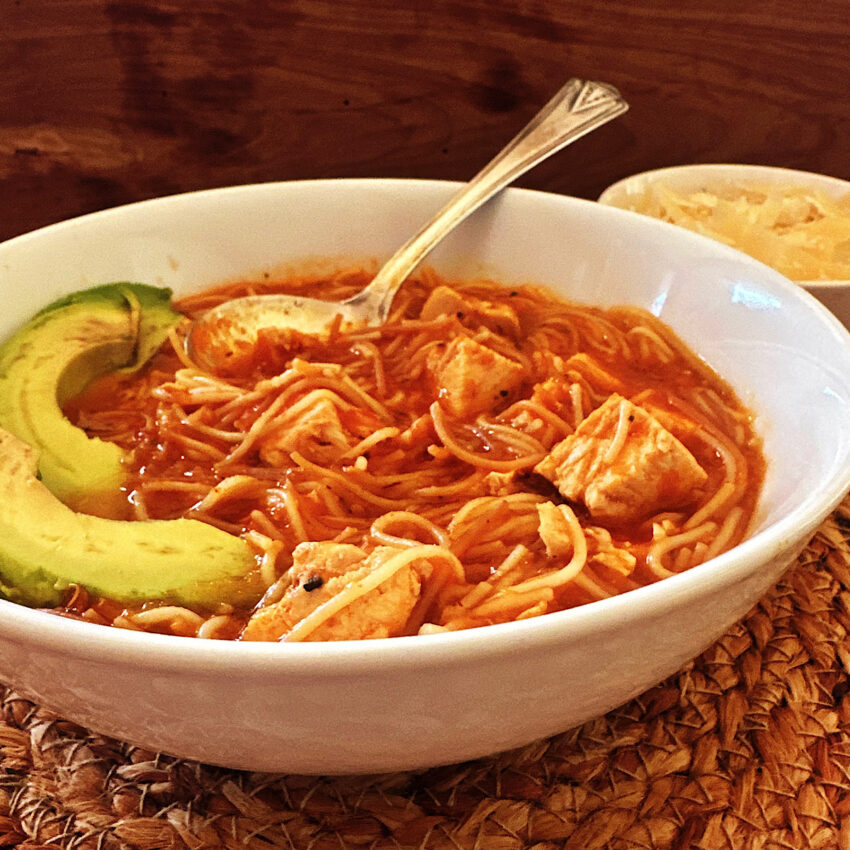
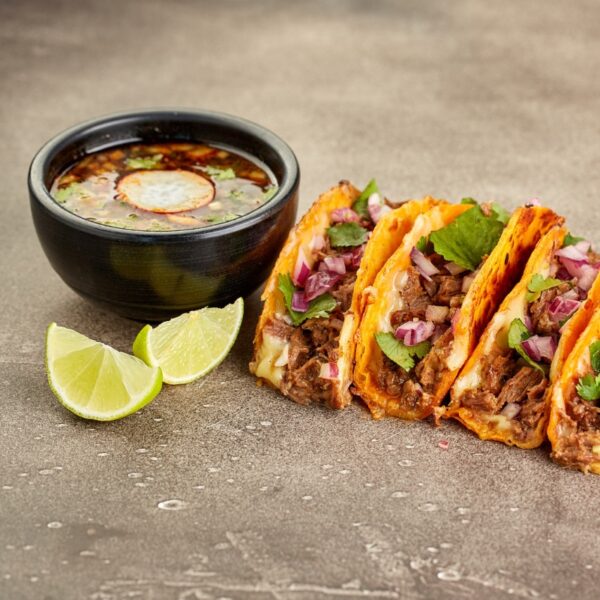
And much more!
As for non-traditional options, there are so many. Here are my favorites:
- Pizza (the crispy salsa and heat are great with cheesy pizza in particular!)
- Scrambled eggs
- Grilled chicken
- Mixed with Mexican rice
- Mixed with noodles
- Potato wedges
- Cream cheese bagel
What is the Shelf Life of Homemade Salsa Macha?
One great thing about salsa macha is that since it’s oil-based, it lasts for ages.
Pop it in an airtight container, making sure all of the bits are covered in oil, and you can keep it in the fridge for 1-2 months.
At room temperature, salsa macha will last for about 2 weeks.
You can also freeze it in an ice cube tray to be able to store it indefinitely.
FAQ: Can you preserve homemade salsa macha by canning? Sorry, no! Oil-based recipes aren’t safe to can at home, as they can create a breeding ground for nasty bacteria like botulism. Try freezing instead.
Homemade Mexican Chile Oil (Salsa Macha)
Equipment
- 1 frying pan
- 1 Blender
Ingredients
- 1 cup olive oil see notes
- 5 cloves garlic sliced
- 20 chiles de árbol stems removed
- 5 chiles moritas stems removed
- ½ cup peanuts raw, unsalted
- 1 tablespoon sesame seeds
- 1 tablespoon vinegar white or apple cider
- salt to taste
Instructions
- Heat the olive oil in the frying pan over medium to medium-low heat. It shouldn't be really hot or smoking!If you are using a cast iron skillet, know that it retains its heat once brought up to temp. It is easy to burn the ingredients so be careful of the temp and move quickly.1 cup olive oil
- Fry the garlic slices until golden brown (about 1 minute), and remove with a slotted spoon and set aside to cool off a bit.5 cloves garlic
- Fry the chile peppers for about a minute in the same oil, until their color darkens (about 1 minute). Remove and set aside.20 chiles de árbol, 5 chiles moritas
- Fry the peanuts in the skillet until they reach golden brown (about 1 minute). Remove and set aside to cool.I found the peanuts difficult to remove with a slotted spoon so I poured the contents of the skillet though a sieve into a bowl. Reserve the oil in the bowl and set the peanuts aside to cool.1/2 cup peanuts
- Add the sesame seeds and the vinegar to the blender along with the garlic, peppers, and peanuts. Pulse until the desired consistency is reached. Leave some bits, you don't want to turn your chili oil into chili paste!1 tablespoon vinegar, 1 tablespoon sesame seeds
- Pour into a bowl or jar and add the oil back in. Mix well and add salt to taste.salt
Notes
- You can really use any oil you like. Olive is popular, but grape seed, peanut, or sunflower would also work just fine.
- You can remove the seeds from the chile peppers, but it’s not a must. Just a matter of preference!
- It’s important not to burn the garlic and chile peppers, as it will turn them bitter and ruin the flavor of your salsa macha.
- This recipe makes around 2 cups of salsa macha, which equates to 32 one-tablespoon servings.

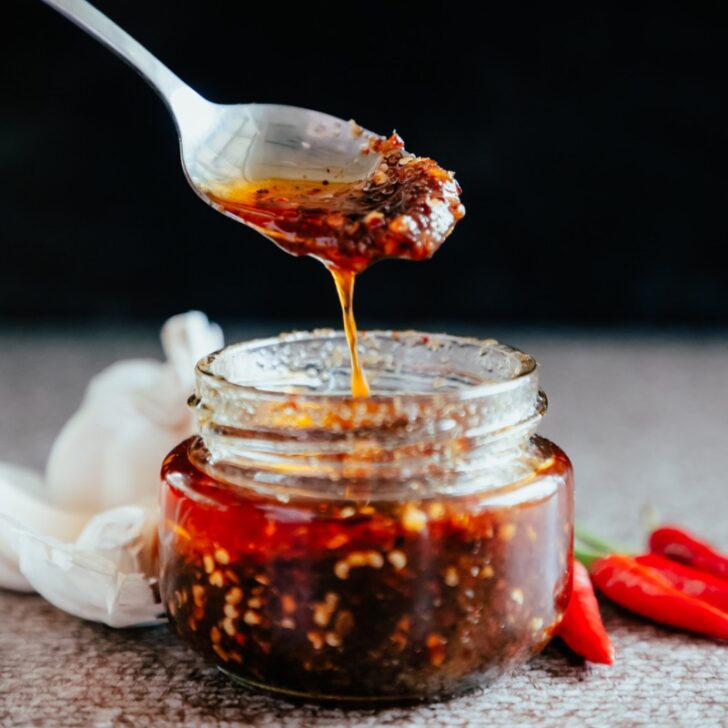
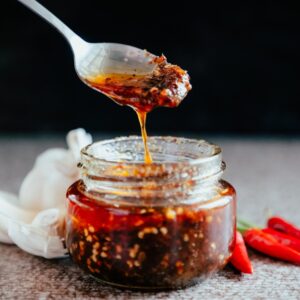
It is Chile Oil not Chili Oil. Do you know the difference?
Yep, I know the difference. My writer from Spain did that post, so I will correct it and let her know. (Btw, I left it as chili when talking about the Chinese chili crisp, as that is how the brand is known). It should be corrected when referring to chile peppers. Thank you for the comment, I appreciate the correction.